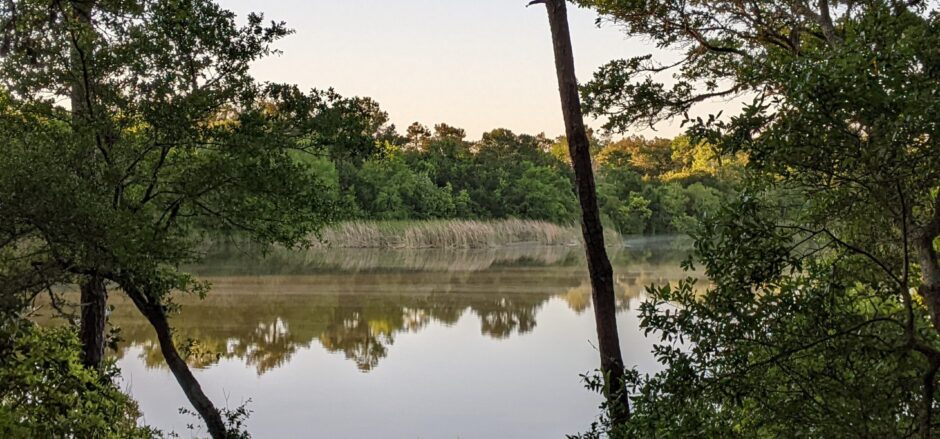The best thing about our room was the balcony, sun-sliced and cozy in the morning, out of the wind. Snow-mottled mountains peeked over the nearby mesa. To the south, mesa upon mesa rippled to a far blue horizon.
A multi-room abode atop the mesa, one doorway leading to another. Roofs collapse: stone walls endure centuries. People lived in the valley and on the mesa for hundreds of years before they built cliff dwellings. On the mesa, they irrigated crops, built reservoirs, dug a round, subterranean kiva in each complex of rectangular rooms.
The cliff homes, farther from their fields, from water, were accessed by ladders: experts still speculate as to why they made that move. I stared at those cliff dwellings. They must have been afraid. Or they couldn’t take the wind anymore. The wind that tangled my hair, cut every walk short.
Clambering down rough stone stairs at Sun Point View as a class of students climbed up them, I stepped to the side. “Sixth-graders, stay to the right,” their teacher called. “They don’t have spatial awareness,” he apologized. “I know. I used to teach them.” We exchanged grins. Those were the only children I saw.
We were early, two weeks after the park opened for the season. Not many guests in the rooms straddling the hill behind the lodge. Older couples like us. Some of the men seemed frail. Phil said they were probably Vietnam vets, making me look at them with new eyes. Not all tours were open yet, and the place was not fully staffed. We wanted a retreat. We got one.
The best thing about the Metate Restaurant at the lodge: this view. To be fair, we did have one or two excellent meals there. But the trout was dry, overcooked—the cardinal sin of fish preparation. Aramark operates lodging and dining at this national park, as it does at many others. Sub-par breakfast and lunch. Room missing shampoo and soap, leaky faucets. Aramark could do better.
Having read a sign forbidding feeding them, I wanted to see horses, summoned them. Toward the end of day two, three grazed placidly beneath our balcony, near an empty parking lot. I must have magic powers.
The sign describes the horses as “feral trespass livestock.” On our second day, the tiny Navajo woman who sold tickets for bus tours came to chat, said “you must like us.” Most come just for the tour, or maybe one night. Perhaps they’d heard about the trout.
The horses belong to the Southern Ute Reservation that adjoins the park, she told us. They rounded them up and returned them to the reservation, tried fences, but those didn’t work either. Two or three days later the horses were back.
“They were born here,” she said, “this is their home.” Mesa Verde was once home to many indigenous tribes. She has worked here twelve years, likes being on this land. People honor the fact that it’s now national park land. Those boundaries mean nothing to horses.
It was silent on the mesa. No cars, no trains, no helicopters. Even the occasional plane followed by a contrail high overhead left only the faintest sound after it disappeared. Birds. A whispering wind. Silence. The tranquility of this immense, virginal land: at least we have not spoiled this.
Once the sky went black and the waxing quarter moon lifted its yellow hammock above the far mesas—stars. Oh, the stars. Did you know, my fellow urbanites, that the night sky is completely perforated by them? Every bit of sky glimmers with them. It was cold and windy at 8,000 feet: I didn’t stay long, but what a thrill to know that multitude still shines. Mesa Verde is a Dark Sky Park, one of the few such places left on our light-polluted planet.
The town barely visible below is Cortez. From where I snapped the shot, about twelve miles of narrow winding road down to the park entrance and another ten into Cortez, where we had an excellent breakfast at Beny’s Diner—100% better than Aramark’s—before beginning our meandering way back home.








